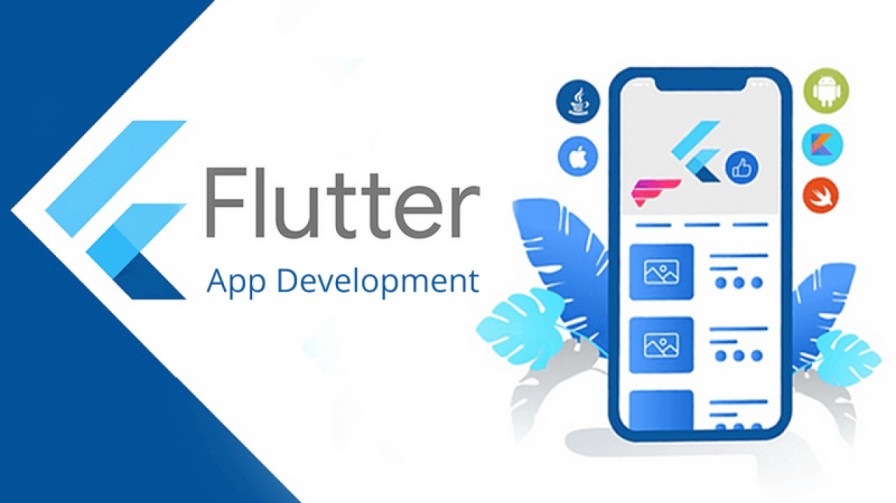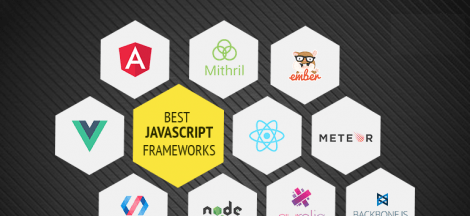Going for a clean architect means low-coupling, flexible, and maintainable applications using clean architecture principles. Ideal for Flutter developers, this approach emphasizes creating architectural boundaries, making components intrinsically testable.
That’s why flutter-clean architecture has become the new trend among developers. In this article, we will be exploring this architecture and learn more about how it is helpful in managing customer interactions or leveraging Flutter/Dart capabilities. This project is your pathway to mastering clean architecture in app development.
Clean Architecture typically consists of the following layers:
The main idea behind Clean Architecture is to divide the app into three layers: the data layer, the presentation layer, and the topic layer.
- Entities: Represent the business logic and data entities of the application.
- Use Cases (Interactors): Contain the application-specific business rules and orchestrate the flow of data between the entities and the outer layers.
- Repositories: Interface for data access, allowing the use cases to retrieve and store data without concern for the actual data source.
- Frameworks and Drivers: Outermost layer, where the UI, external frameworks, and external systems are integrated.
Here is an example Flutter project structure following Clean Architecture:
/lib
|-- core
| |-- entities
| |-- usecases
|-- data
| |-- repositories
|-- presentation
| |-- screens
| |-- widgets
|-- main.dart
Now let’s provide a simple example with code snippets.
// lib/core/entities/user.dart
class User {
final String id;
final String name;
User({required this.id, required this.name});
}
Entities
// lib/core/entities/user.dart
class User {
final String id;
final String name;
User({required this.id, required this.name});
}
Use Cases:
// lib/core/usecases/get_user_usecase.dart
import 'package:your_project/core/entities/user.dart';
import 'package:your_project/data/repositories/user_repository.dart';
class GetUserUseCase {
final UserRepository userRepository;
GetUserUseCase({required this.userRepository});
Future<User> execute(String userId) async {
return await userRepository.getUser(userId);
}
}
Repositories
// lib/data/repositories/user_repository.dart
import 'package:your_project/core/entities/user.dart';
abstract class UserRepository {
Future<User> getUser(String userId);
}
Frameworks and Drivers:
// lib/presentation/screens/user_screen.dart
import 'package:flutter/material.dart';
import 'package:your_project/core/usecases/get_user_usecase.dart';
class UserScreen extends StatelessWidget {
final GetUserUseCase getUserUseCase;
UserScreen({required this.getUserUseCase});
@override
Widget build(BuildContext context) {
return Scaffold(
appBar: AppBar(
title: Text('User Screen'),
),
body: FutureBuilder(
future: getUserUseCase.execute('user123'),
builder: (context, snapshot) {
if (snapshot.connectionState == ConnectionState.waiting) {
return CircularProgressIndicator();
} else if (snapshot.hasError) {
return Text('Error: ${snapshot.error}');
} else {
final user = snapshot.data as User;
return Text('User Name: ${user.name}');
}
},
),
);
}
}
In this example, the UserScreen is a component that belongs to the outer layer. It utilizes the GetUserUseCase to fetch a user from the repository. The repository is in charge of getting the user data from the real data source, which could be a database, API, or something similar.
What is used for the Flutter Clean Architecture?
In a real-world scenario, the above code is the commonly used dependency injection, such as the provider package, to connect your dependencies. This is just a simplified example to illustrate the concept. In addition, it would be helpful to improve the way error states are managed and ensure that proper error handling is implemented in the use cases and repositories.
There can be a lot of use cases, but the developers have divided them into two categories. The first is customers and the second is leads.
Customers:- In this category, the clean architecture works on the customer side.
- Create Customer: Add new customers.
- Get All Customers: View a list of all customers.
- Update Customer Information: Modify customer details.
- Make Customer Active/Inactive: Change the customer’s status.
- Delete Customer: Remove customer profiles.
Leads (Potential Customers):- In this category, the clean architecture works on the customer side.
- Create Lead: Input new potential customer details.
- Get All Leads: See a list of all leads.
- Convert Lead into Customer: Change a lead to a registered customer.
- Update Lead Information: Edit details of leads.
- Create Customer Task: Assign tasks related to customers.
- Get All Activities for Customer: View all tasks and activities for a specific customer.
- These use cases focus on efficient customer and lead management, ensuring the CRM application is user-friendly and adaptable.
Bloc Clean Architecture Flutter Explained
The BLoC (Business Logic Component) is a pattern used for managing the state in Flutter applications. When you combine it with Clean Architecture principles, it helps you to better organize and separate different concerns within a Flutter project. You can integrate the Clean Architecture layers (Entities, Use Cases, Repositories, and Frameworks/Drivers) with the BLoC pattern.
Let’s create a simple example using BLoC and Clean Architecture:
// lib/core/entities/user.dart
class User {
final String id;
final String name;
User({required this.id, required this.name});
}
Entities
// lib/core/entities/user.dart
class User {
final String id;
final String name;
User({required this.id, required this.name});
}
Use Cases:
// lib/core/usecases/get_user_usecase.dart
import 'package:your_project/core/entities/user.dart';
import 'package:your_project/data/repositories/user_repository.dart';
class GetUserUseCase {
final UserRepository userRepository;
GetUserUseCase({required this.userRepository});
Future<User> execute(String userId) async {
return await userRepository.getUser(userId);
}
}
Repositories
// lib/data/repositories/user_repository.dart
import 'package:your_project/core/entities/user.dart';
abstract class UserRepository {
Future<User> getUser(String userId);
}
BLoC
// lib/presentation/bloc/user_bloc.dart
import 'dart:async';
import 'package:bloc/bloc.dart';
import 'package:your_project/core/entities/user.dart';
import 'package:your_project/core/usecases/get_user_usecase.dart';
import 'package:equatable/equatable.dart';
part 'user_event.dart';
part 'user_state.dart';
class UserBloc extends Bloc<UserEvent, UserState> {
final GetUserUseCase getUserUseCase;
UserBloc({required this.getUserUseCase}) : super(UserInitial());
@override
Stream<UserState> mapEventToState(
UserEvent event,
) async* {
if (event is GetUserEvent) {
yield UserLoading();
try {
final user = await getUserUseCase.execute(event.userId);
yield UserLoaded(user: user);
} catch (e) {
yield UserError(error: e.toString());
}
}
}
}
Events and States:
// lib/presentation/bloc/user_event.dart
part of 'user_bloc.dart';
abstract class UserEvent extends Equatable {
const UserEvent();
@override
List<Object> get props => [];
}
class GetUserEvent extends UserEvent {
final String userId;
GetUserEvent({required this.userId});
@override
List<Object> get props => [userId];
}
// lib/presentation/bloc/user_state.dart
part of 'user_bloc.dart';
abstract class UserState extends Equatable {
const UserState();
@override
List<Object> get props => [];
}
class UserInitial extends UserState {}
class UserLoading extends UserState {}
class UserLoaded extends UserState {
final User user;
UserLoaded({required this.user});
@override
List<Object> get props => [user];
}
class UserError extends UserState {
final String error;
UserError({required this.error});
@override
List<Object> get props => [error];
}
UI (Presentation Layer)
// lib/presentation/screens/user_screen.dart
import 'package:flutter/material.dart';
import 'package:flutter_bloc/flutter_bloc.dart';
import 'package:your_project/presentation/bloc/user_bloc.dart';
class UserScreen extends StatelessWidget {
@override
Widget build(BuildContext context) {
final userBloc = BlocProvider.of<UserBloc>(context);
return Scaffold(
appBar: AppBar(
title: Text('User Screen'),
),
body: BlocBuilder<UserBloc, UserState>(
builder: (context, state) {
if (state is UserLoading) {
return CircularProgressIndicator();
} else if (state is UserLoaded) {
return Text('User Name: ${state.user.name}');
} else if (state is UserError) {
return Text('Error: ${state.error}');
} else {
return Text('No data');
}
},
),
floatingActionButton: FloatingActionButton(
onPressed: () {
userBloc.add(GetUserEvent(userId: 'user123'));
},
child: Icon(Icons.refresh),
),
);
}
}
In this example, the UserScreen widget takes care of the user interface. It uses the UserBloc to handle the state and communicate with the GetUserUseCase from the core layer. The BLoC pattern is useful for keeping the UI, business logic, and data access layers separate and organized.
Make sure to include the necessary dependencies in your pubspec.yaml file:
dependencies:
flutter:
sdk: flutter
equatable: ^2.0.3
bloc: ^7.0.0
flutter_bloc: ^7.0.0
What Makes The Clean Architecture Stand Out?
Let’s check these out!
Outstanding Options for Your Sites: You will have recommended strategies to transform your plans into effective applications.
Expertise in Clean Architecture: You will have companies with specialized knowledge producing informative and engaging content, giving you an upper hand in development.
User-Centric Project Approach: Focusing on understanding user needs for relevant solutions, which means no need to focus on jarring content.
Regular Updates and Commitment: Developers have more flexibility in keeping clients informed about progress consistently.
Creative Designing: Employing artistic designers to create high-quality interfaces.
Switch to Expert Online Marketing: It emphasizes the importance of professional online marketing for effective promotion.
Value-Added Services for Growth: Online marketing services play a crucial role in organizational development.
Solving Online Retail Challenges: It addresses issues in online retail with industry-specific marketing strategies.
Principles for Effective Retail Systems: Also the clean architecture helps developers utilize effective principles for a safe and low-risk retail and payment system.
Why Mastering Flutter with Creative and Effective Clean Architecture?
If you’re diving into online Flutter tools, you will come across all types of features to keep your project up-to-date and checking on results is a breeze. Plus, if you’re playing your cards right with this clean architecture Flutter thing, your website could totally rock it to the top of all the search engines.
Also, it makes it easy to rank the website across borders. Besides, you have a load of promising features to make your site look awesome. But remember, you gotta pick a crew that’s not just about looks but also knows their stuff. These teams usually have some ace graphic designers, UI whizzes, and creative minds to bring your vision to life.
Once you get hold of the architecture, you can always make tweaks to your website, improving its flow and look. After a bit of tweaking here and there, they’ll hit you with the final look through some cool mock-ups or layouts.
The Benefits Of Flutter Clean Architecture
Diving into Clean Architecture for your Flutter projects isn’t just about the good code. Rather, it’s a strategic move bringing a slew of perks. If you expect your development journey to be smooth, then this is where you start. While it offers an abundance of perks, let’s discuss some of them.
Testability
Clean architecture turns your app into a neatly organized set of layers, each with its own job. This separation makes testing easy for a beginner to an experienced developer. You can zoom in and test each layer on its own, when making tweaks in one spot won’t mess up your tests elsewhere. It’s like having a neatly compartmentalized toolbox where each tool can be sharpened independently.
Code Quality and Independence
Clean Architecture in Flutter is like having a well-oiled machine; each part works independently yet seamlessly together. This setup not only makes your code more readable and easier to understand but also ramps up the reusability. You get a codebase that’s not just high quality but also versatile, adaptable, and ready for whatever you throw at it.
Scalability
As your Flutter app grows, it’s like adding more rooms to a house. Clean Architecture is your expert architect. It ensures that every new addition fits perfectly without chaos. This organized approach keeps your expanding app smooth and manageable, avoiding the typical growing pains of app development.
Readability and Easier Maintenance
A codebase where every piece of code knows its place. That’s what you get with Clean Architecture. It’s easy for developers to navigate, crush bugs, and add cool new features. This clarity slashes the time and effort needed in the maintenance phase. It makes life way easier for everyone involved.
Long-term Efficiency
Sure, setting up Clean Architecture might feel like a bit of extra work at the start. But think of it as an investment. In the long run, you’re setting up your project for success. It’s particularly handy for big projects with lots of moving parts and integrations. The initial setup time is dwarfed by the efficiencies and improvements you’ll experience down the line.
Wrapping Up!
So, that’s all about the Flutter clean architecture. We hope you got an overview of how it’s great for developers and some of the setbacks related to it. With that, thanks for reading this guide.







 The Rise of Metaverse Casinos: A Glimpse into the Future of Gambling
The Rise of Metaverse Casinos: A Glimpse into the Future of Gambling